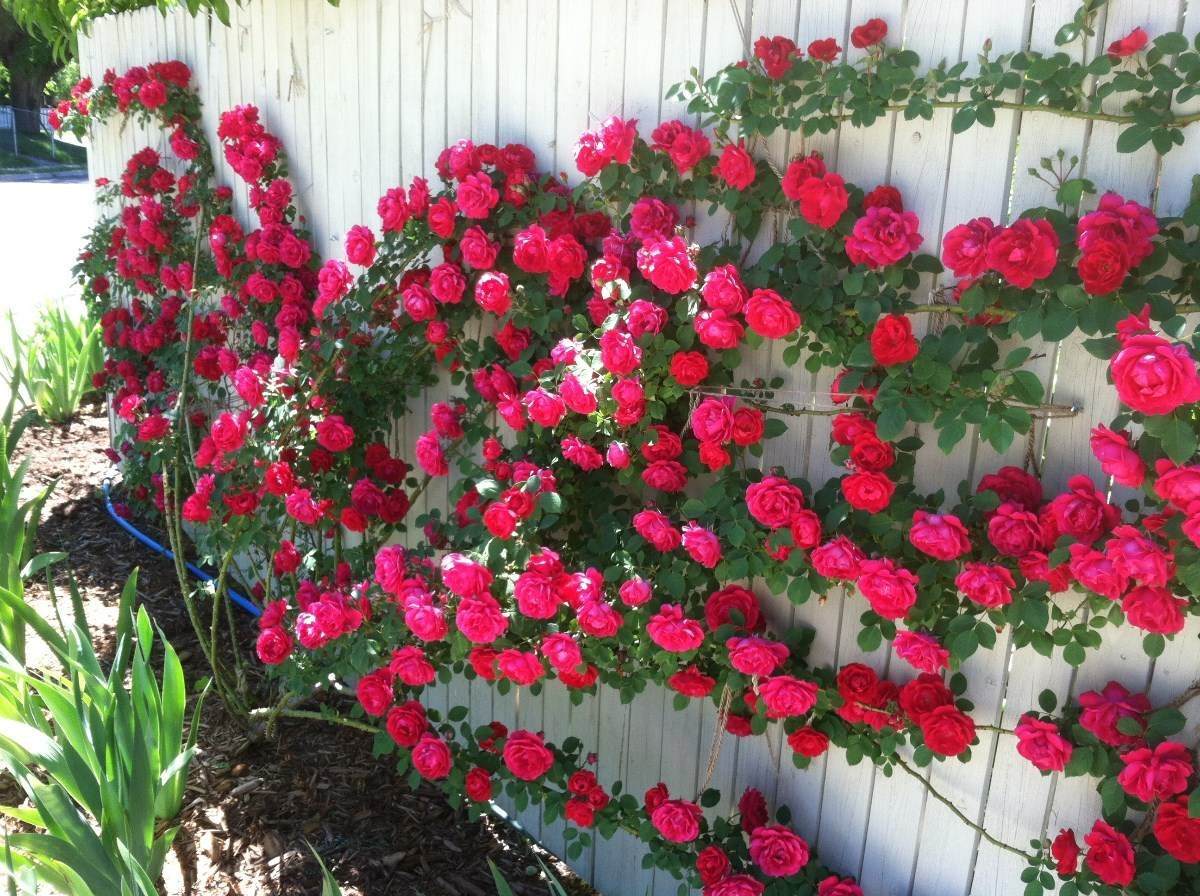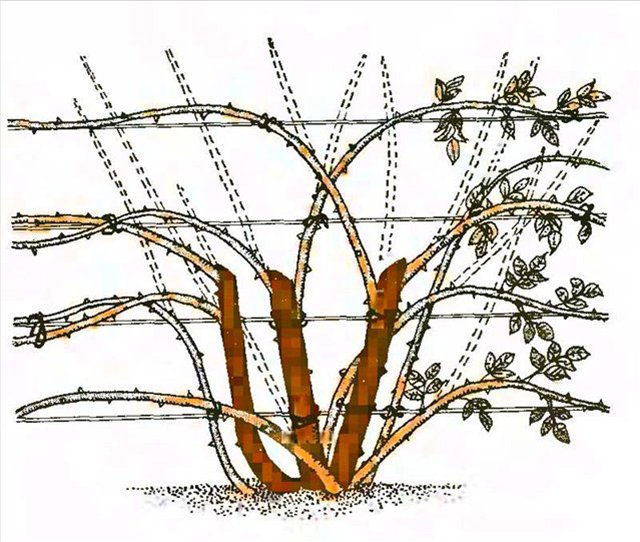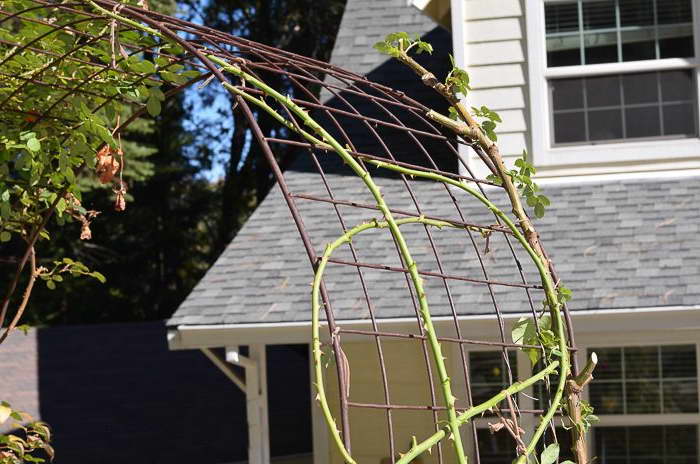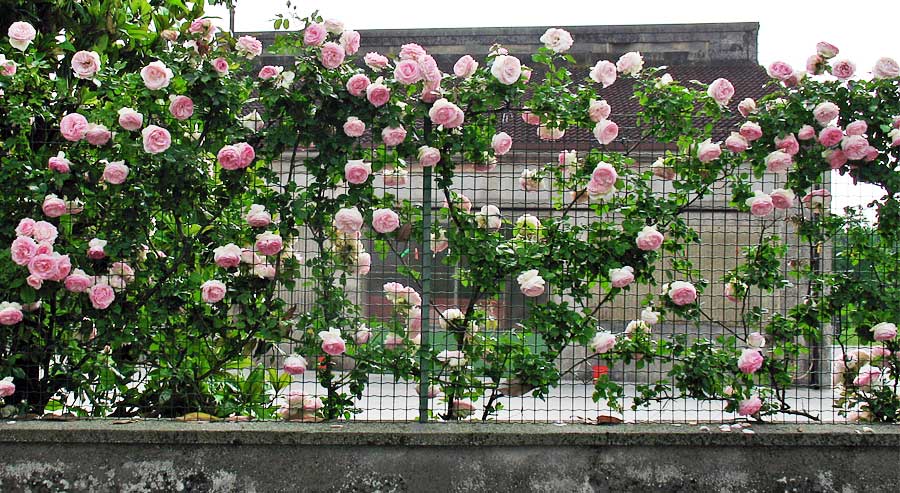Content:
Climbing roses are some of the most beautiful, graceful varieties in the world of flowers. They are able to decorate any place. Dacha is no exception. Landscape designers often use a bush variety to decorate gardens and parks. That there are only one arches created from these graceful plants. And the hedges of climbing roses! The variety of color variations is surprising, the competent combination of which can transform the space. This article will go into more detail on how to tie up climbing roses.
General rules for the care of a climbing (curly) rose
In order for curly roses to become a decoration of the space, it is necessary to provide them with decent care. In case of attentive and careful attitude, these "royal flowers" will delight you from year to year. They also have a gorgeous, delicate, graceful scent that contributes to the overall enchanting atmosphere. Having seen just once how climbing roses bloom, you will want to plant such flowers in your garden.
For this variety, three components are extremely important:
- Top dressing;
- Watering;
- Pruning.
Top dressing
There are plants that can be easily dispensed with without fertilization. Roses of this variety do not belong to this category. They love to be fertilized. Literally before our eyes, they are transformed from the "correct feeding". First of all, you need to feed the roses after pruning in the spring. The best fertilizer in this case will be rotted manure and ammonium nitrate. In size: 3 kg of manure for a bush and 25-30 grams per 1m2.
After 14 days, it is worth carrying out the feeding process with other means: mullein - 3 liters, potassium salt, ammonium nitrate 10 grams each, superphosphate - 40 grams. The soil is fertilized with this mixture. When the roses begin to bloom a second time, add up to 100 grams of ash per bush, superphosphate - 40 grams, potash salt 15 grams.
Watering climbing roses
On average, flowers are watered once a week. It is still worth considering factors such as weather conditions. There is a nuance in watering technology: you need to water slowly, slowly, at the very root. This watering will prevent the formation of superficial roots. The most favorable time for watering is early morning.
Watering a climbing rose - be sure to observe the measure. Towards autumn, watering should be reduced. Waterlogging of the soil can lead to plant diseases. No watering procedure is required in October. Winter is easily tolerated.
Pruning climbing roses
Pruning for this variety of roses is essential. For crown formation, lush and abundant flowering and keeping the crop healthy.
Pruning should be done carefully so as not to damage either the plant or yourself. You need to use a well-sharpened tool.
In some cases, pruning has its own characteristics. General basic rules for pruning:
- Using a sharpened cutter;
- The cut is made at an angle and at a distance of 5 cm from the kidney;
- The cuts are done very carefully;
- Timely need to remove dry, frozen stems;
- Shoots that have not received development should also be removed.
Why do they make supports for a climbing rose
The question may arise: "What is the support for a climbing rose?" The fact is that climbing roses do not have any hooks on the stems so that they can twist around them on their own. They need to be fixed on the supports, setting a certain direction, fixing on the supports. Fastening climbing roses solves problems such as:
- Creating a beautiful bush shape;
- Abundant flowering at full height;
- By making the crown more rare, this ensures a favorable climate inside the crown;
- Healthy stems and foliage make climbing roses look even more beautiful.
How to tie roses to a support
Best of all, in order to avoid additional worries, it is worth giving the shoots the desired shape in advance. Immediately you need to install a support when planting a seedling. This will eliminate the likelihood of damage to the emerging root system of the plant.
There are several options for how to fix a climbing rose:
- Horizontal garter - on a lattice or trellis;
- Spiral-like - strapping a post or other vertical support;
- Vertical - along tree trunks, arch columns;
- Fan-shaped — next to a wall or hedge.
Expert tip: how to tie curly roses:
“In the springtime, climbing roses definitely need time to set buds on horizontal shoots. There is no sense in rushing to lift from the support. You need to wait a while for the buds to appear up to 3-5 cm on the second-order shoots. Once I tried, without waiting for the young shoots to grow and decided to attach them to the support. As a result, the entire pipe was practically bare: there was no flowering. Once again, I was convinced that you need to wait until the kidneys swell.
When placing climbing roses on a support, it is required to take into account that the laying of pink shoots occurs at an angle of 30 degrees. In accordance with this, they are placed on the supports.
In the case of a horizontal arrangement, the growth of lateral branches will increase, which are absolutely not needed in this case.
With the vertical arrangement of climbing roses, you will need to artificially create branching, because the flower will grow in length. Here it will be necessary to bend the top of the plant to the bottom to change direction.
A rose bush can be formed in the form of a fan, which will become a screen, a partition, or will act as a decoration for walls, fences.
Diy rose arch: a detailed guide, diagram
Most often, arches for climbing roses are placed near the entrance to the courtyard. This is not the only place where she "will come to court." An excellent location would be a place next to the gazebo. Arches are usually made of wood, metal. The plastic version also takes place. The strength of this material is poor. The most durable are forged arches. They are mainly used as a support for climbing roses.
In order to make a support with your own hands, you need to decide on its purpose. You can pre-create a drawing. Will it only serve as a decoration on the flowerbed or will it be an entrance, a place to rest. The purpose is taken into account when choosing the material and thickness of the bases, cross battens. Below are recommendations on how to make an arch for a climbing rose with your own hands.
Diy arch creation algorithm
- You will need the following reinforcement: rods, at least half a cm in diameter. As a rule, a pair of rods is used. It is necessary to bend in an arc and dig into the ground to a depth of half a meter;
- Special metal rods must be fixed between a pair of rods. It is more convenient to attach to the wire. So it is easier to tie the plant up in the spring, and it is also more convenient to remove it when autumn comes;
- You need to paint over all the details of the arch before installing. Have rods with a diameter of about 0.6 cm. Typically, 2 rods are used as a base. They are given the shape of an arc and then dug into the ground to a depth of 50 cm;
- The number and length of the beams depends on the structure of the arch. It is important to firmly fasten the bars together;
- The result is a ladder. To create an arch, you need two of them. On top of the arch - attach small beams;
- The wooden frame must be varnished.
Tips and tricks from experienced florists and gardeners
Which arch to choose?
Each material has its own advantages. So, a tree looks great in combination with green leaves and flowers. Thick stems are usually attached.
What is better to make an arch for a rose yourself or buy a ready-made one?
It depends on the size of the arch, the availability of construction skills, the amount of free time and financial capabilities.
If making such an elegant garden accessory is a pleasure, and inspiration is available, then you can safely create it yourself.
The arch with climbing roses entwined around it will become a unique decoration of the garden. It is worth the effort and time.
Every gardener needs to know how to tie up a climbing rose so that it pleases with its flowering and thin stems do not break from improper support.

















